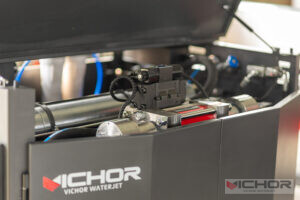
Plasma Jet Machine: Revolutionizing Modern Industrial Applications
In today’s fast-paced industrial landscape, the plasma jet machine stands out as a groundbreaking technology that has transformed various manufacturing and processing sectors. This advanced equipment leverages the power of plasma—a high-energy state of matter—to perform tasks with unparalleled precision and efficiency. From metal cutting to surface treatment, the plasma jet machine has become an indispensable tool in industries worldwide. In this comprehensive article, we will explore the fundamental aspects of this technology, its operational mechanisms, diverse applications, key benefits, different types, and address common questions users often have. By the end, you will have a thorough understanding of why the plasma jet machine is a vital asset in modern engineering and production environments.
What is a Plasma Jet Machine?
A plasma jet machine is a device that generates and controls a high-velocity stream of plasma, which is essentially ionized gas consisting of free electrons and ions. This plasma is created by subjecting a gas—such as argon, nitrogen, or oxygen—to intense electrical energy, causing it to reach extremely high temperatures, often exceeding 20,000 degrees Celsius. The resulting plasma jet can be directed onto materials to perform various tasks, including cutting, welding, cleaning, and coating. The core components of a plasma jet machine typically include a power supply, an arc starting circuit, a torch or nozzle assembly, and a gas delivery system. These elements work in harmony to produce a focused plasma stream that can be manipulated for specific industrial needs. The versatility of the plasma jet machine lies in its ability to handle a wide range of materials, from conductive metals like steel and aluminum to non-conductive substrates, making it a preferred choice in sectors such as automotive, aerospace, and construction. Understanding the basics of this machine is crucial for appreciating its broader implications in technology and industry.
How Does a Plasma Jet Machine Work?
The operation of a plasma jet machine revolves around the principles of electrical ionization and gas dynamics. Initially, a gas is fed into the torch assembly, where an electric arc is ignited between an electrode and the workpiece or nozzle. This arc ionizes the gas, converting it into plasma by stripping electrons from atoms and creating a conductive channel. As the plasma forms, it is constricted and accelerated through a narrow nozzle, resulting in a high-velocity jet that can reach supersonic speeds. The intense heat and kinetic energy of the plasma allow it to melt, vaporize, or modify materials upon contact. For instance, in cutting applications, the plasma jet machine precisely severs metals by melting and blowing away the molten material, leaving a clean edge. In welding, it fuses parts together with minimal distortion. The process is highly controllable, with parameters like gas flow rate, current, and nozzle size adjustable to suit different tasks. This adaptability makes the plasma jet machine efficient for both thick and thin materials, ensuring consistent results. Moreover, advancements in CNC (Computer Numerical Control) integration have enabled automated operations, enhancing precision and repeatability. By harnessing the power of plasma, this machine delivers exceptional performance in demanding environments, reducing processing times and improving overall productivity.
Applications of Plasma Jet Machines
The plasma jet machine finds extensive use across multiple industries due to its versatility and efficiency. In metal fabrication, it is commonly employed for cutting and shaping components, offering superior speed compared to traditional methods like mechanical sawing or laser cutting. For example, in shipbuilding and automotive manufacturing, the plasma jet machine quickly processes large metal sheets with high accuracy. Another significant application is in welding and joining, where it provides strong, clean welds on materials such as stainless steel and aluminum, often in aerospace and construction projects. Beyond metalworking, the plasma jet machine is used in surface treatment processes, such as plasma cleaning and etching, which prepare surfaces for painting, coating, or bonding by removing contaminants and improving adhesion. In the electronics industry, it aids in circuit board manufacturing by precisely drilling holes and trimming components. Additionally, the plasma jet machine plays a role in medical device production, where it sterilizes instruments and modifies biomaterial surfaces for enhanced compatibility. Environmental applications include waste treatment, where plasma jets break down hazardous materials into harmless byproducts. The broad applicability of the plasma jet machine underscores its importance in advancing industrial capabilities and driving innovation in sectors ranging from energy to healthcare.
Benefits of Using a Plasma Jet Machine
Adopting a plasma jet machine offers numerous advantages that contribute to operational efficiency and cost-effectiveness. One of the primary benefits is its high cutting and processing speed, which significantly reduces production times and increases throughput. Unlike conventional tools, the plasma jet machine can handle thick materials with ease, minimizing the need for multiple passes. Precision is another key advantage, as the focused plasma stream allows for intricate designs and clean edges, reducing material waste and secondary finishing work. The plasma jet machine is also highly versatile, capable of working with various materials and thicknesses, which simplifies inventory and tooling requirements. Energy efficiency is notable, as modern systems optimize power consumption, leading to lower operational costs. Furthermore, the non-contact nature of plasma processing reduces wear and tear on components, extending the machine’s lifespan and minimizing maintenance needs. Safety improvements are evident, as many plasma jet machine models include features like automated shut-offs and fume extraction systems, protecting operators from hazards. In terms of environmental impact, the technology often uses inert gases that produce fewer pollutants compared to other methods. Overall, the plasma jet machine enhances productivity, quality, and sustainability, making it a smart investment for businesses aiming to stay competitive in today’s market.
Types of Plasma Jet Machines
Plasma jet machines come in various configurations to suit different industrial needs, each with unique features and capabilities. The most common types include manual, mechanized, and high-definition plasma jet machine systems. Manual systems are operated by hand, ideal for small-scale workshops or repair jobs where flexibility is key. They are user-friendly and cost-effective, making them accessible for beginners. Mechanized systems, on the other hand, are automated and often integrated with CNC technology, allowing for precise, repeatable tasks in large-scale production environments. These are popular in manufacturing plants for cutting complex shapes and patterns. High-definition plasma jet machine models offer enhanced precision and finer cut quality, suitable for applications requiring tight tolerances, such as in the aerospace or electronics industries. Another categorization is based on the gas used: air plasma systems are economical and widely used for general-purpose cutting, while oxygen or nitrogen-based systems provide better performance for specific materials like stainless steel or aluminum. Additionally, some plasma jet machine variants are designed for specialized purposes, such as underwater plasma cutting, which reduces noise and fumes, or portable units for on-site work. Understanding these types helps users select the right plasma jet machine for their specific requirements, ensuring optimal performance and return on investment.
manufacturing plants for cutting complex shapes and patterns. High-definition plasma jet machine models offer enhanced precision and finer cut quality, suitable for applications requiring tight tolerances, such as in the aerospace or electronics industries. Another categorization is based on the gas used: air plasma systems are economical and widely used for general-purpose cutting, while oxygen or nitrogen-based systems provide better performance for specific materials like stainless steel or aluminum. Additionally, some plasma jet machine variants are designed for specialized purposes, such as underwater plasma cutting, which reduces noise and fumes, or portable units for on-site work. Understanding these types helps users select the right plasma jet machine for their specific requirements, ensuring optimal performance and return on investment.
Common Questions About Plasma Jet Machines
When considering a plasma jet machine, users often have several questions regarding its operation, maintenance, and suitability. Below, we address some of the most frequently asked questions to provide clarity and guidance.
What materials can a plasma jet machine process?
A plasma jet machine is primarily used for conductive materials like steel, aluminum, copper, and brass. However, with adjustments, it can also handle certain non-metallic materials for surface treatment. The key is to match the machine settings to the material’s properties for best results.
How do I maintain a plasma jet machine?
Regular maintenance of a plasma jet machine involves checking and replacing consumables like electrodes and nozzles, ensuring clean gas lines, and calibrating the system periodically. Proper upkeep extends the machine’s life and maintains performance quality.
What safety precautions are necessary?
Operating a plasma jet machine requires protective gear, such as gloves and eye protection, due to high temperatures and UV radiation. Adequate ventilation is essential to manage fumes, and operators should be trained on emergency procedures to prevent accidents.
Can a plasma jet machine be used for fine detailing?
Yes, especially high-definition models of the plasma jet machine are capable of fine detailing with minimal kerf width and high accuracy. CNC integration further enhances this capability for intricate designs.
What is the typical lifespan of a plasma jet machine?
With proper care, a plasma jet machine can last for many years, often over a decade. Lifespan depends on usage intensity, maintenance routines, and environmental conditions.
How does a plasma jet machine compare to laser cutting?
While both are effective, a plasma jet machine generally excels in cutting thicker materials at higher speeds and lower costs, whereas laser cutting offers superior precision for thinner materials. The choice depends on specific application needs.
Are there environmental concerns with using a plasma jet machine?
Modern plasma jet machine systems are designed to be environmentally friendly, using gases that minimize harmful emissions. However, proper disposal of consumables and adherence to local regulations are important to reduce ecological impact.
By addressing these common inquiries, users can make informed decisions and maximize the benefits of their plasma jet machine investments.
In conclusion, the plasma jet machine is a transformative technology that continues to evolve, offering efficiency, precision, and versatility across numerous industries. Whether for cutting, welding, or surface treatment, this machine delivers reliable performance that meets the demands of modern production. As industries advance, the role of the plasma jet machine is set to expand, driving further innovations and improvements. By understanding its aspects and addressing common questions, businesses can harness the full potential of this powerful tool to achieve their goals.
continue reading
Related Posts
- 1371 words6.9 min read
- 1449 words7.3 min read


